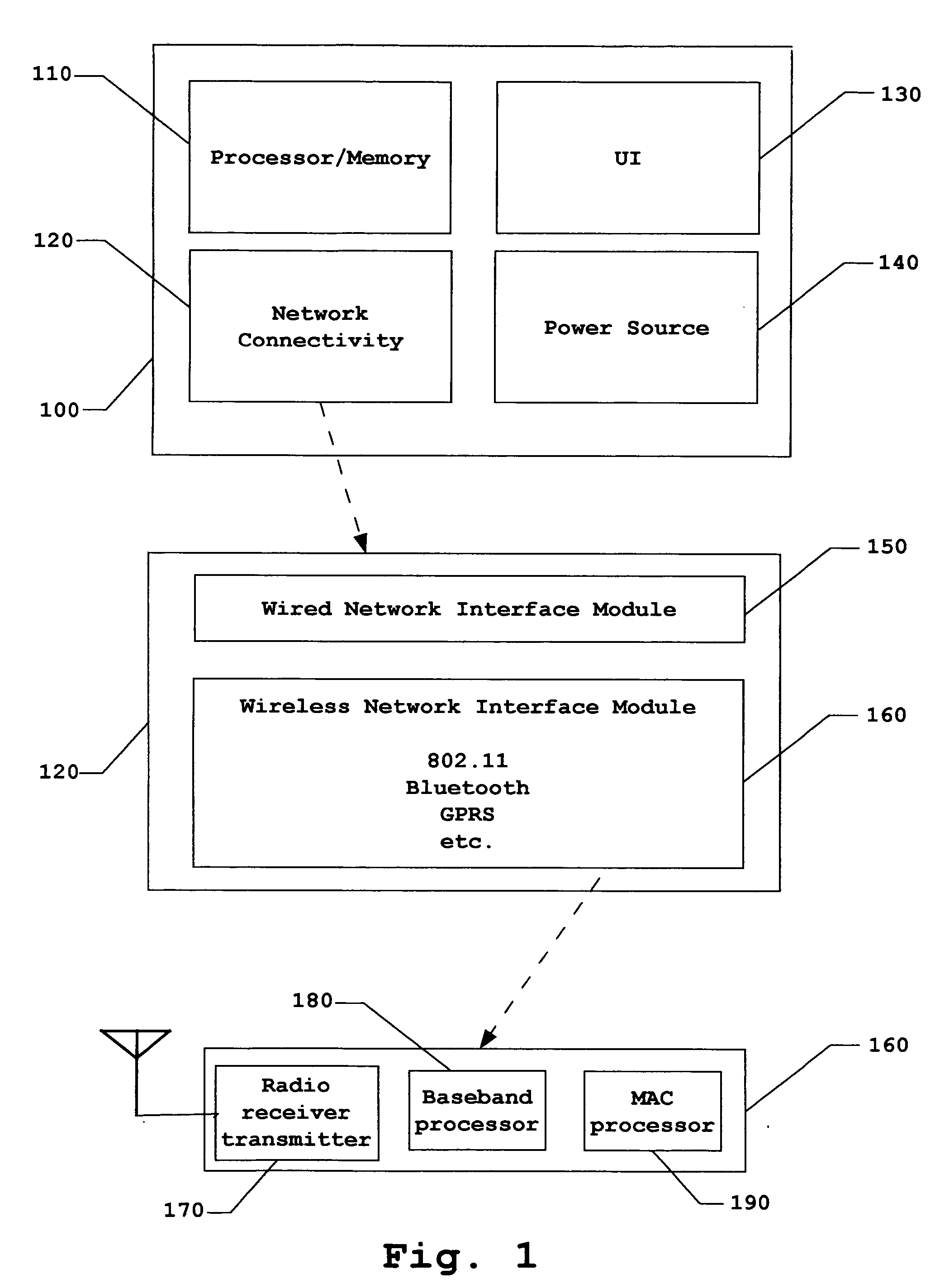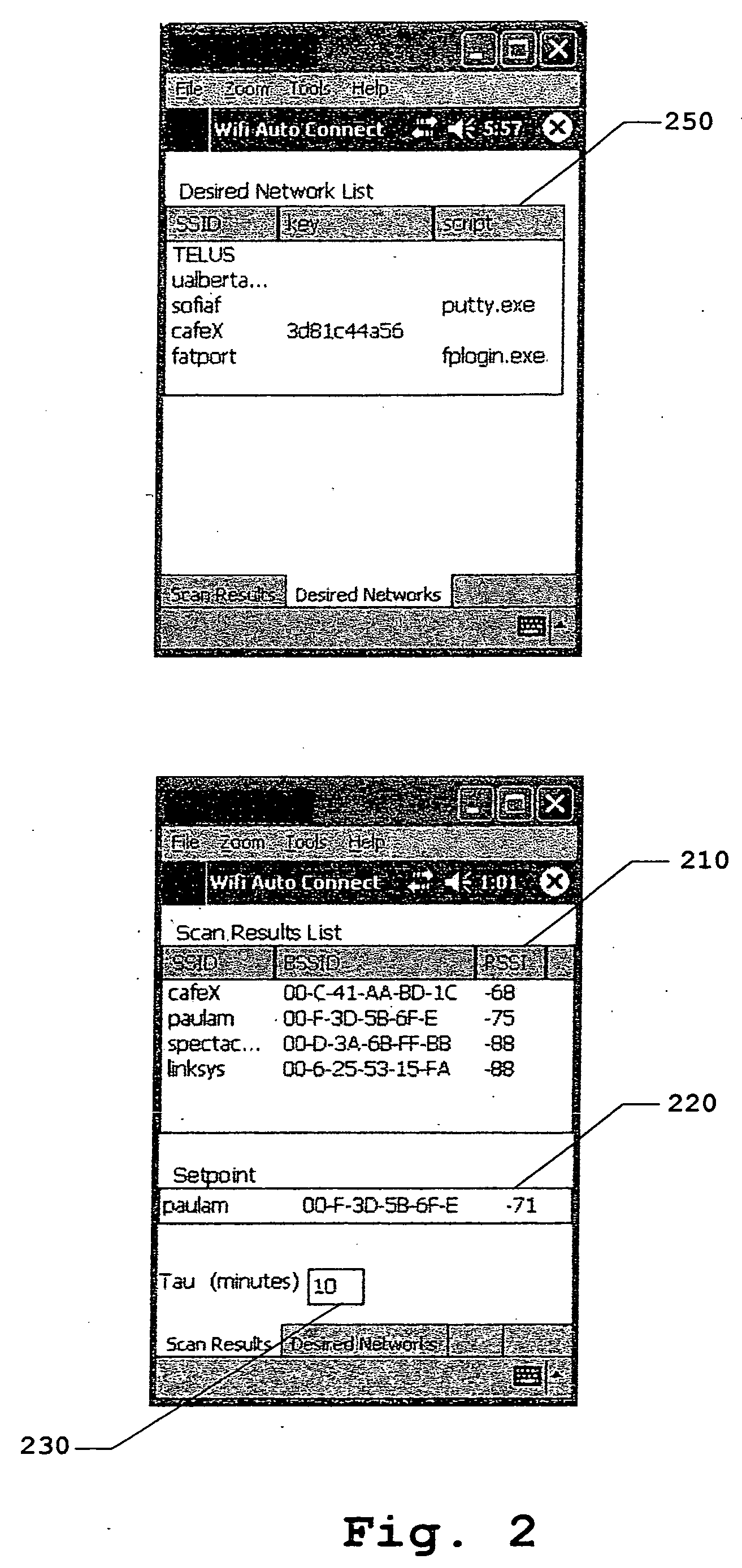Automatic connection of a mobile device to a wireless network
a mobile device and wireless network technology, applied in the direction of power management, transmission, assessment, etc., can solve the problems of undiscovered good solution for automated connection to 802.11 networks, unnecessarily exposing users to rf radiation, continuous monitoring requires scanning for networks, etc., to reduce user rf exposure, increase the time between connection attempts, and power efficient
- Summary
- Abstract
- Description
- Claims
- Application Information
AI Technical Summary
Benefits of technology
Problems solved by technology
Method used
Image
Examples
Embodiment Construction
[0026] In this patent document, including the claims, the use of the word “comprising” does not exclude other elements being present and the use of the indefinite article preceding an element does not exclude more than one of the element being present.
[0027] Typically, automatic connection of a mobile device to a wireless network will be implemented in a wirelessly enabled mobile device such as a PDA (personal digital assistant). The word “mobile device” includes any wireless enabled mobile device now known or hereafter developed. FIG. 1 shows the hardware block diagram of a typical mobile device 100 that is configured to implement the method steps of the automatic connection of a mobile device to a wireless network. The main subsystems of the mobile device 100 include a processor / memory block 110, a UI block 130, a power source block 140 and a network connectivity block 120. The network connectivity block 120 comprises a wired network interface module 150 and a wireless network in...
PUM
 Login to View More
Login to View More Abstract
Description
Claims
Application Information
 Login to View More
Login to View More - R&D
- Intellectual Property
- Life Sciences
- Materials
- Tech Scout
- Unparalleled Data Quality
- Higher Quality Content
- 60% Fewer Hallucinations
Browse by: Latest US Patents, China's latest patents, Technical Efficacy Thesaurus, Application Domain, Technology Topic, Popular Technical Reports.
© 2025 PatSnap. All rights reserved.Legal|Privacy policy|Modern Slavery Act Transparency Statement|Sitemap|About US| Contact US: help@patsnap.com



